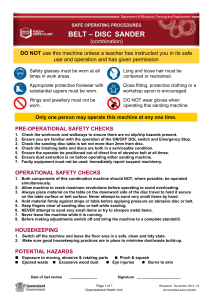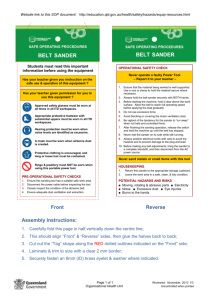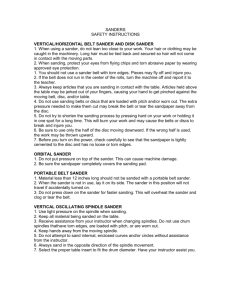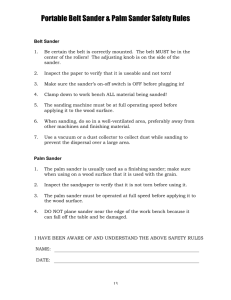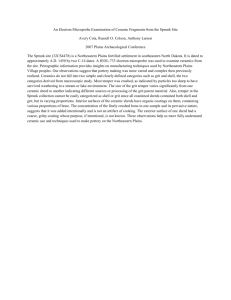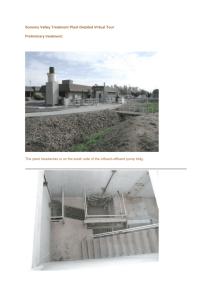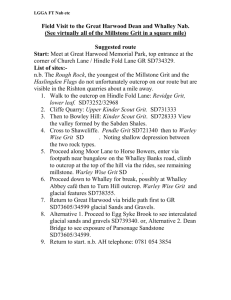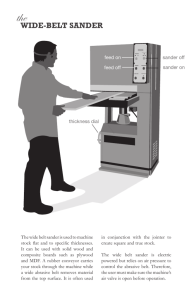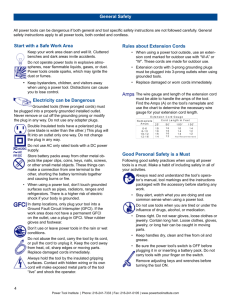Sanding methods PowerPoint
advertisement
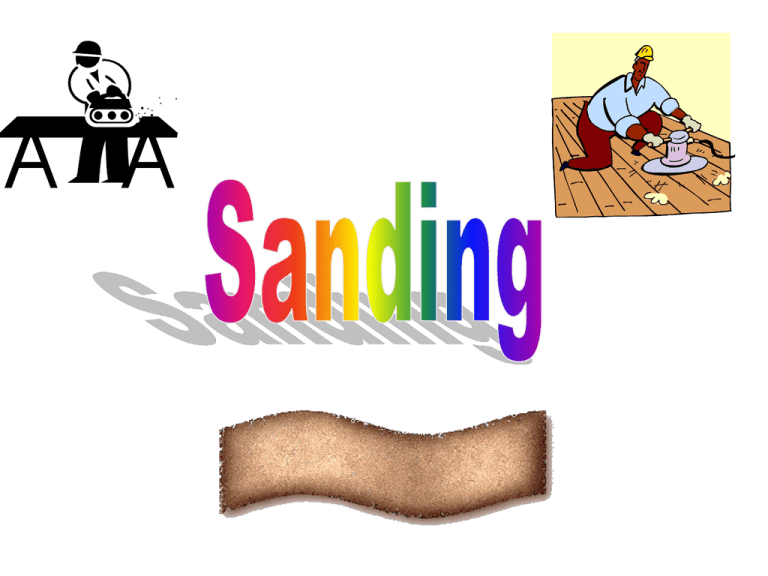
1. Coated abrasives, commonly known as “sandpaper” are available in a variety of grit sizes and backing materials. A. B. C. D. Thin and flexible-150 to 600 grit Heavier than A-100 to 150 grit Heavy-Usually less than 100 grit Heaviest- used for sanding disks 2. Abrasive Materials, or grit, can be either natural or synthetic. The most common materials are: Flint: made from quartz Aluminum Oxide: made from aluminum ore Garnet:a natural red silicate material Silicon Carbide: made from silica, petroleum coke, salt, and wood sawdust Emery: a natural material best for metal sanding 3. Abrasive Grit Sizes: Standard grit sizes for most materials are indicated by a number Class Very fine Mesh size 400 360 320 280 240 220 180 Continued….. Symbol 10/0 ----9/0 8/0 7/0 6/0 5/0 Class Mesh Symbol Fine 150 120 100 80 60 50 40 36 30 24 20 4/0 3/0 2/0 1/0 ½ 1 1½ 2 2½ 3 3 1/2 Medium Course Very Course 1. All exposed surfaces of the stock are sanded 2. Repair any dents or major scratches before sanding 3. Grades 80, 120 and 220 abrasive materials can be used for most sanding jobs 4. Always start with the coarser grade, followed with finer grades 1. Disk Sander: Useful when shaping edges and ends of stock 2. Belt Sanders: -Production Wide Belt Sander -Stationary Belt Sander -Portable Belt Sander 3. Finish Sanders: used for the last steps in the sanding process. -they are designed to use regular sheets of sandpaper in either ¼, 1/3, or ½ sections. 4. Other Sanders 1. Drum sanders use abrasive sleeves that fit onto a rubber cylinder. Used to sand curved edges of stock.
